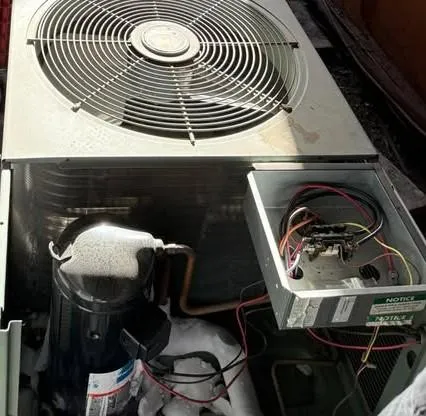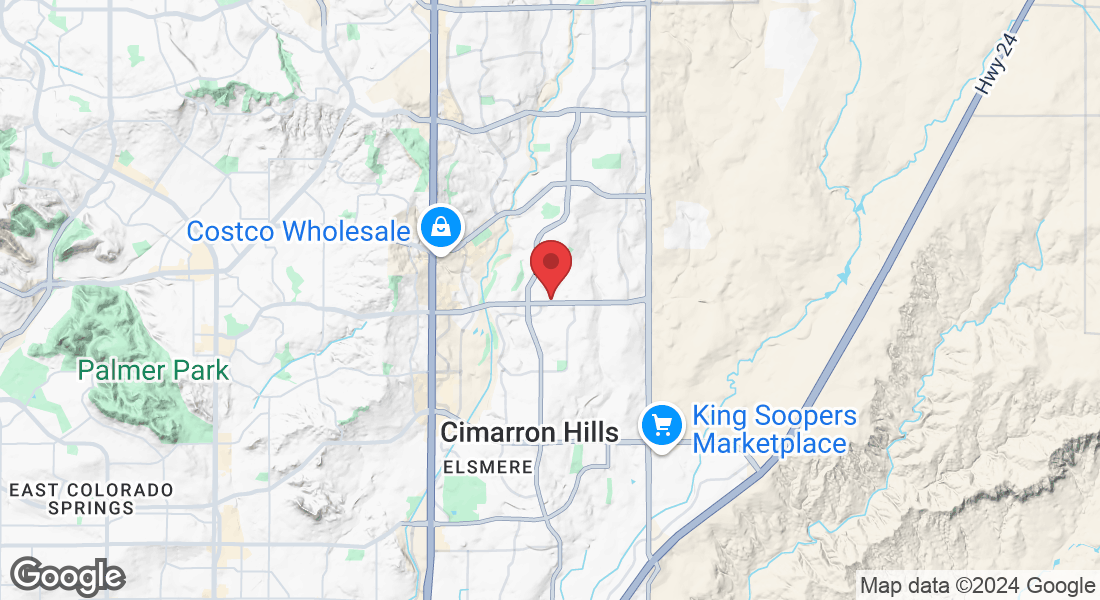Superior Care for your Heating
and Cooling Systems
Bringing Integrity Back to HVAC


Help! My A/C Lines Are Frozen – What Should I Do?
Help! My A/C Lines Are Frozen – What Should I Do?
If you’ve gone outside and noticed that the copper lines on your air conditioner are covered in ice or frost, you’re not alone. This is a common issue, especially during Colorado’s hot summer days. But while it might look harmless, frozen A/C lines are a sign that something’s not working right—and using your system while it’s frozen can make things worse.
Here’s what to do right away if your A/C lines are frozen, and how to prevent it in the future.
Step 1: Turn Off Your A/C
As soon as you notice ice on the lines outside, or even water or ice near your indoor unit (like the furnace or coil area)—shut off your air conditioner at the thermostat. Continuing to run it while frozen can cause major damage to the system, especially the compressor.
Step 2: Set the Thermostat to “Fan On”
Once cooling is turned off, set your thermostat fan setting to “On” (not “Auto”). This runs just the blower, helping warm air move over the frozen coils and speed up the thawing process. Do not turn the cooling function back on yet, only the fan.
Step 3: Check Your Air Filter
A clogged or high-efficiency (high-MERV) filter can restrict airflow and cause the evaporator coil to freeze.
Pull the filter and inspect it
Replace it if dirty or if you recently switched to a high-MERV filter
We recommend changing filters regularly and avoiding filters rated above MERV 11 unless your system is designed for them
Step 4: Inspect Air Vents and Returns
Blocked vents, closed registers, or dirty return grills can also restrict airflow and cause freezing.
Make sure all supply vents are open
Check that nothing is covering them (like furniture or rugs)
Wipe down dusty return air grills to improve circulation
Step 5: Let the System Thaw Completely
Depending on how much ice has built up, it can take several hours to fully defrost. Be patient and do not try to scrape off the ice or melt it with hot water. You may also notice water pooling near your indoor unit; this is normal during the thawing process, but it’s a sign that ice has reached the indoor coil area. Lay down towels if needed.
Step 6: Call for Service
Once the system is fully thawed, don’t turn the A/C back on just yet. A frozen system means something isn’t working right and running it again can cause another freeze-up or lead to permanent damage. Instead, contact a licensed HVAC professional (like us!) to inspect the system, pinpoint the cause, and safely get it cooling again.
Why Do A/C Lines Freeze?
Here are the most common reasons we see A/C systems freeze up:
Dirty or clogged air filters
High-MERV filters restricting airflow
Low refrigerant (often due to a leak)
Dirty evaporator coils
Blower motor problems
Blocked or undersized ductwork
Thermostat set too low (we recommend 72°F or higher)
Poor system design or airflow imbalance
Most of these issues require professional diagnosis—but catching and fixing them early can save you from more expensive repairs later.
Need Help? We’ve Got You Covered.
At Pendleton Heating & Cooling, we know how uncomfortable and stressful a frozen A/C can be. If your system is iced up, we’re just a phone call away. Call us today or schedule online for expert service and honest, no-pressure solutions. We offer flat-rate pricing and financing options to make repairs or upgrades easier on your budget.
ABOUT US

Our values drive our mission.
We are committed to Excellence in Service.
Pendleton Heating & Cooling!
EXPERIENCED, INSURED, LICENSED & BONDED
Our certificate of insurance is on file with El Paso County Regional Building.
SUPERIOR HOME CARE
Our technicians are trained to take exceptional care of your property, from caring for your carpets with carpet protectors to taking extreme care with your new equipment and post work cleanup!
ACCREDITATIONS
We are HVAC Excellence Certified and also certified with the National Technical Honor Society!
LOCAL TRANE DEALER
We are your local TRANE® dealer! We have one of the highest levels of customer service and our staff is factory trained in the newest developments of TRANE equipment.
Our TestimonialS
Our Clients Feedback Means the World to Us
⭐⭐⭐⭐⭐
Rob Thompson
I've referred Pendleton to my clients, that's how much I trust them! Top notch service, always!
⭐⭐⭐⭐⭐
Tina Friedheim
They were so thorough and helpful! Brandy got me in that day to have them take a look at my furnace. It was a simple fix and taught me what I may look for next time. Outstanding customer service Thank you Pendleton Heating & Cooling for all you do!
⭐⭐⭐⭐⭐
Lara Matisek
I’m so grateful to Kip and Brandy. I had previously hired a master plumber to do my tankless water heater. He did work not up to code and gave me a million excuses about my permit. After learning his work is why it would not pass and I applied pressure to him, he ghosted me after taking $6k of my money. I was looking for a mechanical contractor who is legally permitted to work on this and that’s where Kip comes in. He not only took the job, but did an amazing job. I’m forever grateful to them!
⭐⭐⭐⭐⭐
Sophia Chapman
Prices were great! Honest! Professional!! Will definitely be sticking with them!
FAQs
How often should I have my HVAC system serviced?
You should have your HVAC system serviced twice a year, once in the spring and once in the fall. This will help to ensure that your system is running efficiently and effectively, and it will also help to identify and prevent any potential problems.
What are the benefits of having a programmable thermostat?
A programmable thermostat can help you to save money on your energy bills by allowing you to control the temperature of your home when you are not there. You can program your thermostat to turn down the heat in the winter and turn up the air conditioning in the summer when you are away or asleep.
What is the best way to choose the right size HVAC system for my home?
The best way to choose the right size HVAC system for your home is to have a load calculation performed by a qualified HVAC contractor. This calculation will take into account the size of your home, the number of windows and doors, the insulation value of your walls and attic, and the climate in your area.

